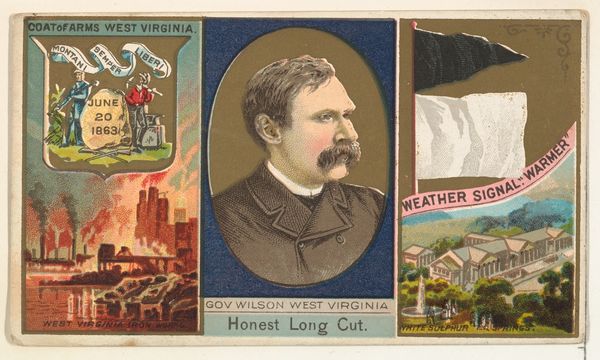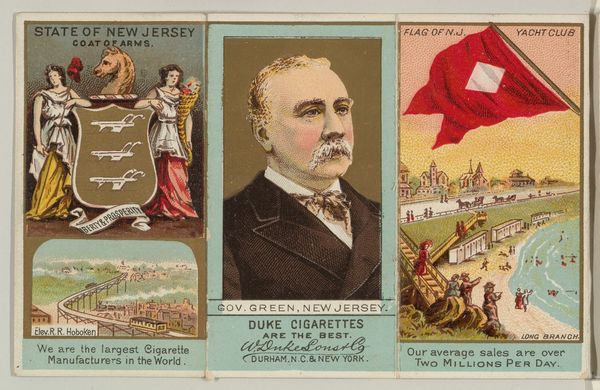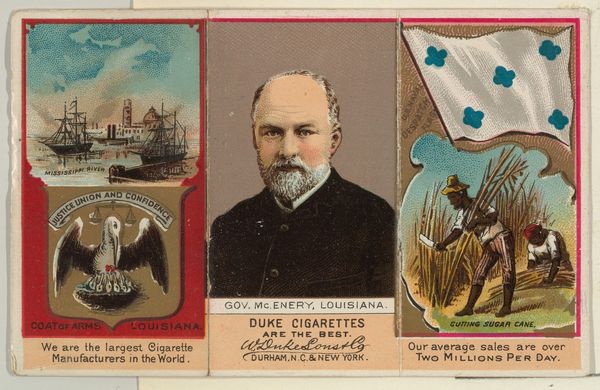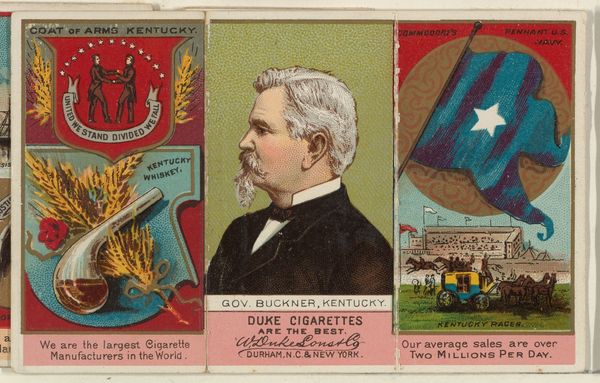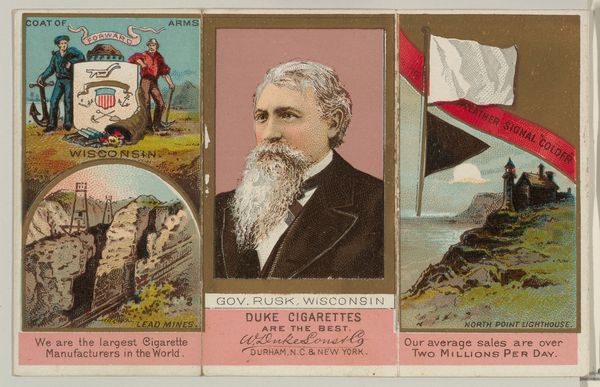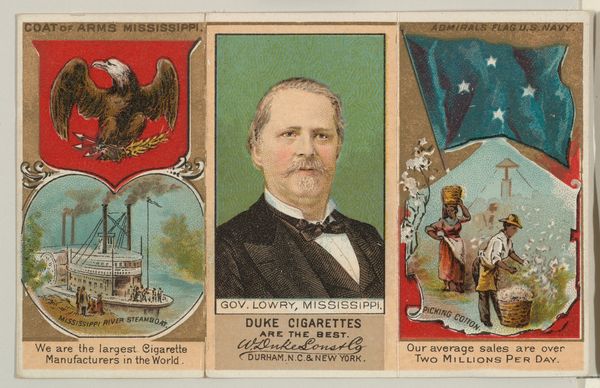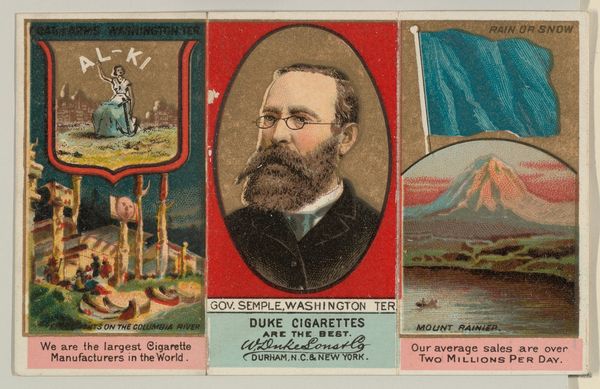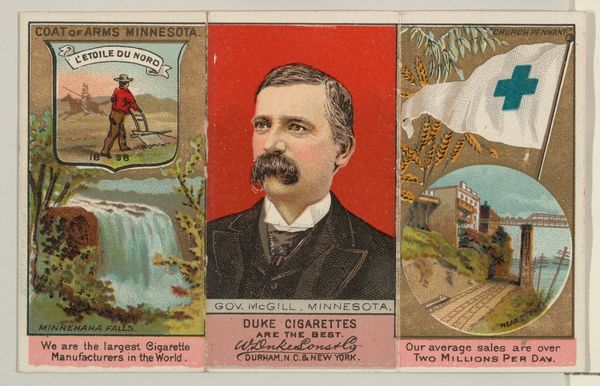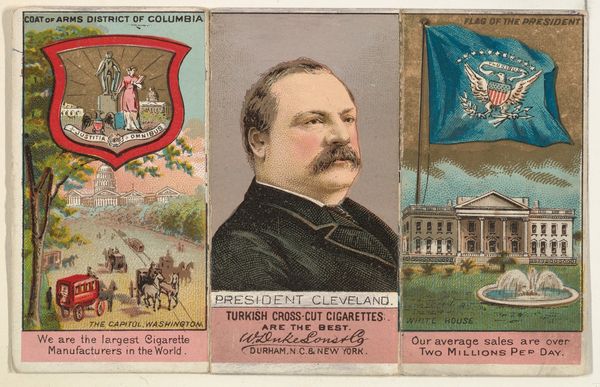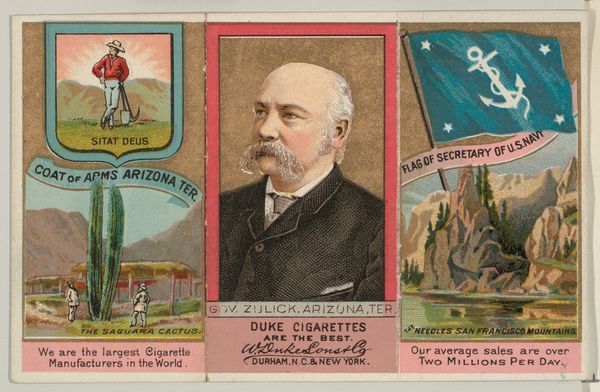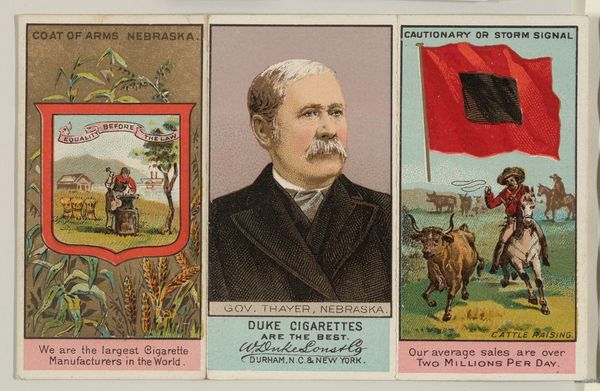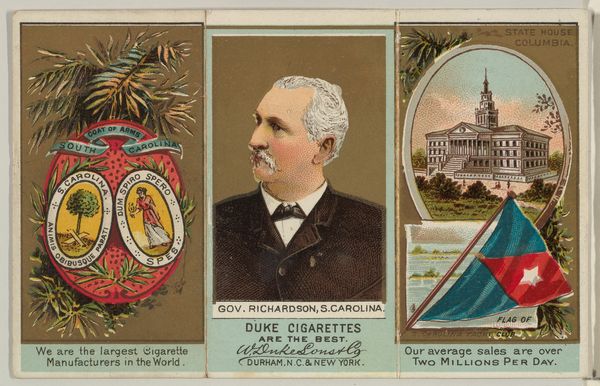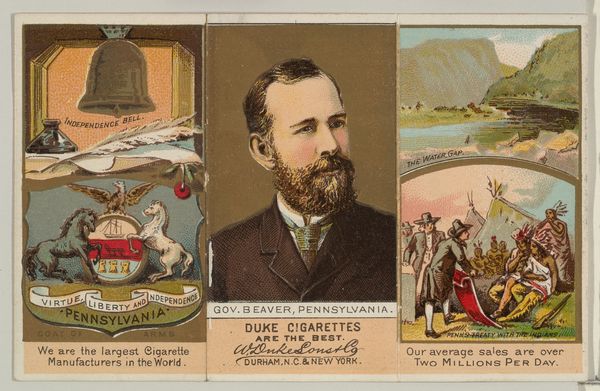
Governor Wilson, West Virginia, from "Governors, Arms, Etc." series (N133-2), issued by Duke Sons & Co. 1885 - 1892
0:00
0:00
drawing, graphic-art, coloured-pencil, lithograph, print
#
portrait
#
drawing
#
graphic-art
#
coloured-pencil
#
lithograph
# print
#
figuration
#
coloured pencil
#
cityscape
#
history-painting
#
academic-art
#
miniature
#
profile
#
building
Dimensions: Sheet (unfolded): 2 3/4 × 4 5/16 in. (7 × 11 cm) Sheet (folded): 2 3/4 × 1 3/8 in. (7 × 3.5 cm)
Copyright: Public Domain
Editor: Here we have "Governor Wilson, West Virginia," a lithograph from around 1885-1892 by W. Duke, Sons & Co. It’s this little advertising card featuring the governor's portrait alongside cityscapes and, strangely, a weather signal flag. The juxtaposition feels so disjointed; what do you make of a piece like this? Curator: It’s crucial to recognize the historical context: advertising. This card wasn't meant for a museum, but rather to be included in cigarette packs. Its primary function was to sell a product by associating it with respectability – the governor – and prosperity, signaled by the landscapes. Editor: So the goal wasn't artistic expression, but promoting an image, literally? Curator: Precisely. Notice the three distinct panels: the state seal connected to industry, the Governor’s portrait at the center, and the leisure depicted on the right. Each appeals to a different facet of West Virginia that the manufacturer wishes to connect to its product and buyers. The text boast "largest Cigarette Manufacturers." It presents Duke as synonymous with prosperity, achievement, and American life. Consider how powerful the politics of such imagery would have been during its time. Editor: That makes the imagery choices clearer; almost like visual branding for a state and a product at once. Was this kind of imagery common in marketing back then? Curator: Very much so. Cigarette cards became miniature encyclopedias of popular culture, from baseball players to monarchs, aiming to appeal to diverse consumer interests and societal norms. So much can be read from the placement of the images in their attempt to influence perceptions through visual narrative. Editor: I never would have considered it beyond just a portrait, but now it seems loaded with meaning and a marketing agenda. Curator: Exactly. Studying these cards offers insights into the values and aspirations being promoted at the time and illuminates the power of images within society.
Comments
No comments
Be the first to comment and join the conversation on the ultimate creative platform.
